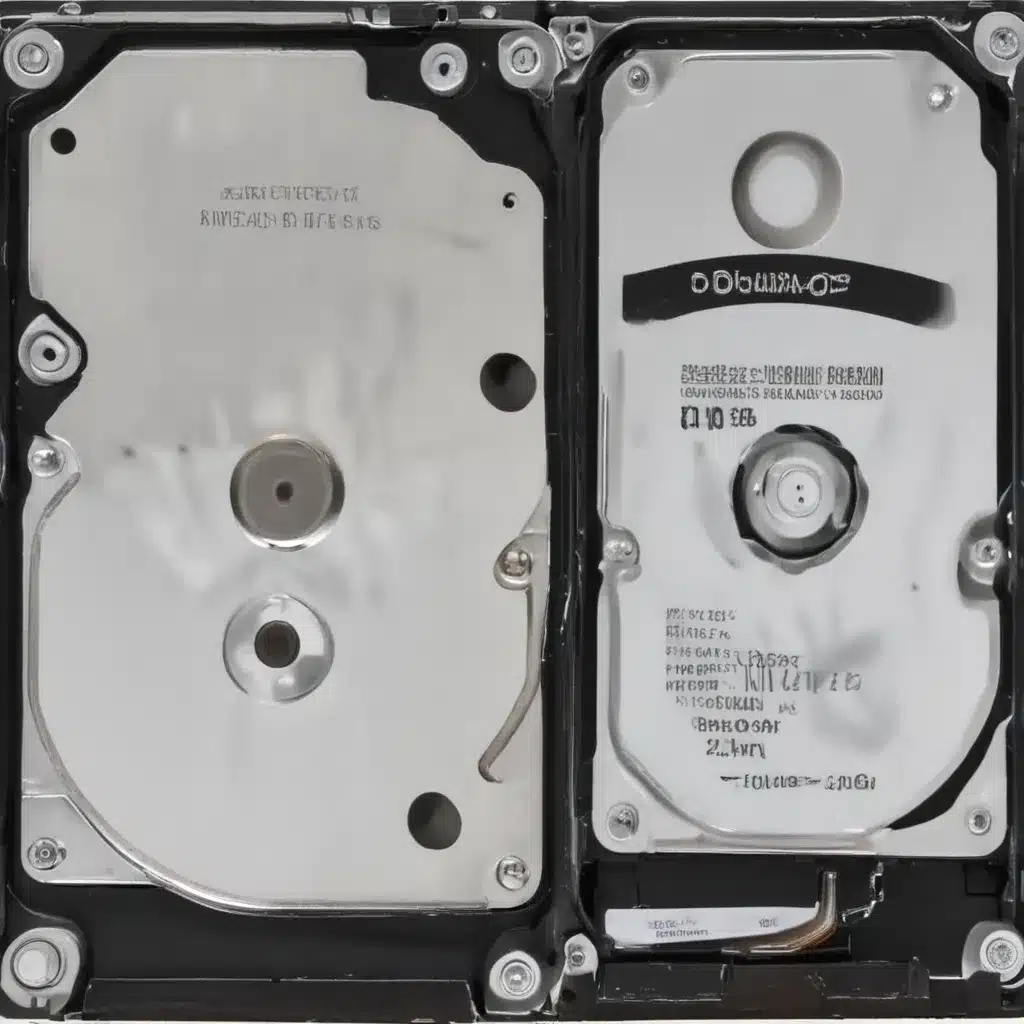Battling the Beast of Bad Sectors
Ah, the dreaded bad sector – that bane of every hard drive owner’s existence. It’s like a pesky troll, lurking in the dark corners of your digital domain, cackling as it corrupts and devours your precious data. But fear not, my fellow tech-savvy adventurers, for I have a tale to share that will equip you with the knowledge and tools to slay this digital demon and retrieve your data from the clutches of the bad sector beast.
Recently, I found myself facing this very challenge. My trusty 3TB NTFS-formatted drive, which housed a trove of irreplaceable files, had fallen victim to the dreaded SMART errors and bad sectors. [1] The panic set in as I realized that a significant portion of my data – around 500GB worth – had no backup. It was a true digital nightmare, akin to waking up to find your favorite teddy bear had been shredded by a pack of rabid hamsters.
Navigating the Minefield of Bad Sectors
As I delved into the problem, I discovered a wealth of information from tech forums and communities [2][3][4][5][6][7][8] – a veritable treasure trove of knowledge to guide me through this treacherous journey. The key, it seemed, was to employ the power of cloning tools, those unsung heroes of the data recovery world.
I learned that the standard Windows copy function and even popular tools like TeraCopy were not up to the task, as they would often hang or crawl at a snail’s pace when encountering those pesky bad sectors. [3] No, I needed something more robust, something that could navigate the minefield of corrupted data and emerge victorious.
Unleashing the Power of Cloning Tools
Enter ddrescue, the unsung hero of the data recovery world. [4][5] This Linux-based tool promised to be the key to my salvation, with its ability to clone drives sector by sector, gracefully bypassing any bad sectors it encountered. The idea was to create a clone of the drive, preserving as much of the data as possible, and then sift through the cloned drive to recover the important files.
But hold on, it wasn’t as simple as just running ddrescue and calling it a day. Oh no, my friends, this was a multi-step process that required a bit of technical know-how and a healthy dose of patience. First, I had to create a Ubuntu live CD and install the gddrescue package, the updated version of ddrescue. [6] Then, I had to identify the NT device name of my ailing drive using a tool called WinObj. [4]
With these pieces in place, I was ready to unleash the power of gddrescue. The tool meticulously scanned my drive, creating a detailed log of the bad sectors it encountered. [4] This log was a goldmine, as it allowed me to pinpoint the affected areas and map them to the corresponding files.
Recovering the Crucial Data
Armed with this information, I turned to another invaluable tool – nfi.exe, a Microsoft utility that could map the bad sectors to the specific files they impacted. [4] By running nfi.exe in a batch file, I was able to generate a comprehensive list of the affected files, allowing me to prioritize the recovery efforts.
To my relief, the majority of the impacted files were not critical – just a few dozen unique files that I either had backups of or could easily reinstall. [4] It was as if the digital gods had taken pity on me, sparing me from the agony of losing irreplaceable data.
Lessons Learned and a Brighter Future
This experience has taught me a valuable lesson: never underestimate the power of bad sectors, but also never underestimate the resilience of data recovery tools. By combining the prowess of cloning utilities like gddrescue and the precision of mapping tools like nfi.exe, I was able to navigate the treacherous landscape of bad sectors and emerge victorious, with my data safely recovered.
As for the drive itself, it’s now relegated to a life of unimportant storage, destined to be low-level formatted and mapped for bad blocks. [4] But hey, at least it’s not languishing in the digital graveyard, its contents forever lost to the ravages of time and technology.
So, the next time you find yourself staring down the barrel of a drive filled with bad sectors, don’t despair. Embrace the power of cloning tools, arm yourself with the right knowledge, and be prepared to embark on a digital adventure that will have you triumphantly retrieving your data from the jaws of defeat.
[1] https://www.tenforums.com/drivers-hardware/151270-recovering-data-hard-drive-too-many-bad-sectors.html
[2] https://www.reddit.com/r/datarecovery/comments/z2a5ld/best_method_to_copy_files_from_hdd_with_bad_sector/
[3] https://community.wd.com/t/getting-a-list-of-bad-sectors/17365
[4] https://community.spiceworks.com/t/trying-to-clone-a-hard-drive-that-has-bad-sectors-but-still-boots/738493
[5] https://www.data-medics.com/forum/threads/how-to-clone-a-hard-drive-with-bad-sectors-using-ddrescue.133/
[6] https://forums.tomshardware.com/threads/dead-drive-how-to-bypass-bad-sectors.1292378/
[7] https://www.sevenforums.com/general-discussion/331869-best-method-tool-cloning-failing-hdd-data-recovery-3.html
[8] https://forums.tomshardware.com/threads/cloning-disk-with-bad-blocks.2621968/













